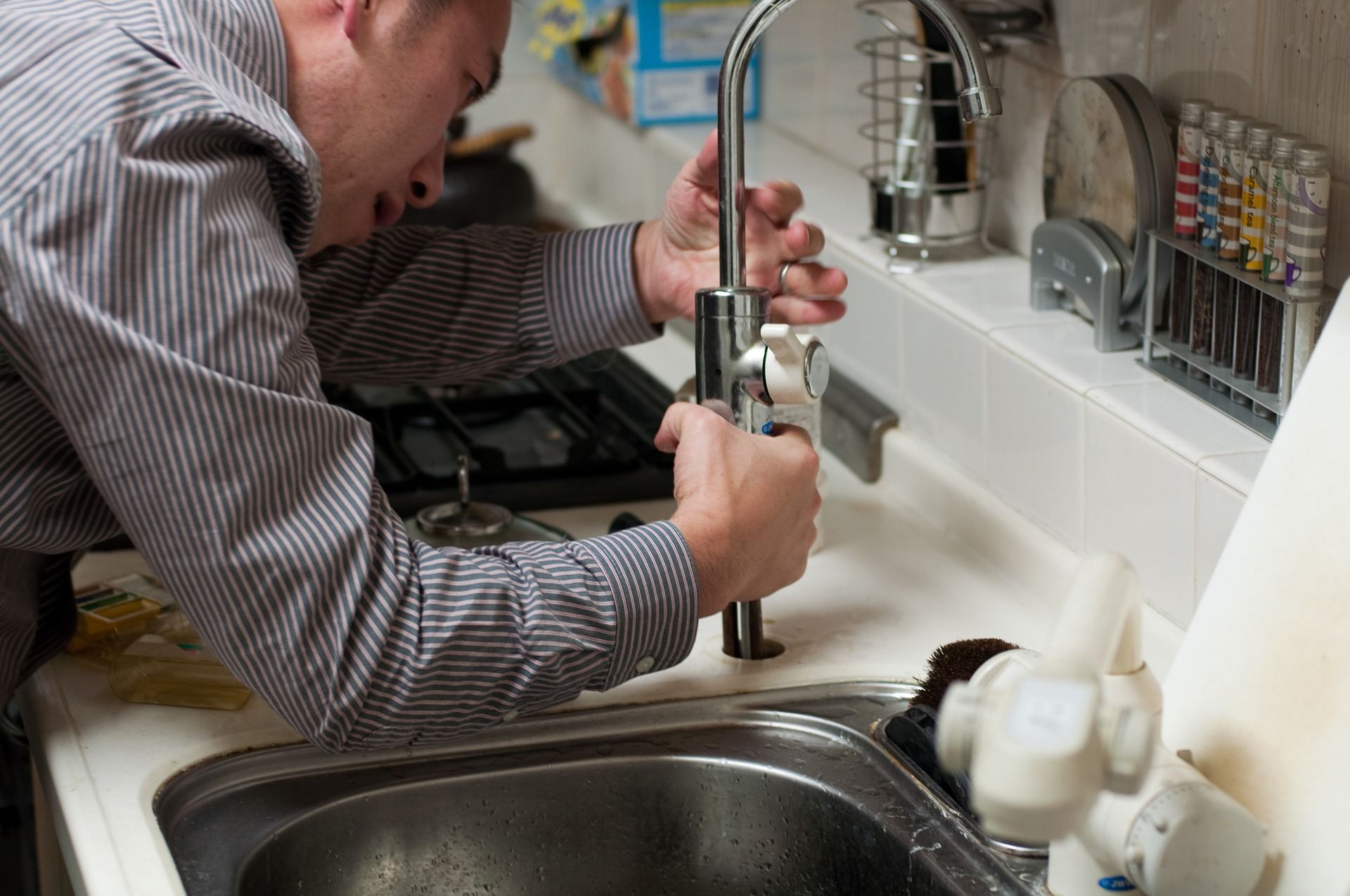We look at the range of issues that may require a plumbers help. Find out more about common plumbing problems that you may encounter at home or work.
No hot water? Clogged sinks? These are common problems, but how do you deal with them? Join us as we discuss the most standard plumbing issues and how you can save yourself money in 2022 by avoiding them!
What Are Common Plumbing Problems
Homeowners face many plumbing problems each year, with the most common being leaky pipes or clogged drains. When your plumbing system is on the fritz or your water bill seems to rise overnight, you can suddenly begin to worry.
If your water flow is disturbed or you are experiencing cold water or another plumbing emergency, there is no need to panic, as many of these are quick fixes for an experienced plumber.
The more we use our sinks and drains, the more likely there are to be blockages and problems. This is expected, but whether you're moving into a new property or are in an older home, you can put your best foot forward and protect yourself from plumbing problems.
Before you call a plumber, keep reading this article as we discuss the most common plumbing problems, what situations are regarded as plumbing emergencies and what steps you can take to avoid a big mess with your hot water heaters or sewer lines.
Most Common Plumbing Issues
There are very few plumbing problems that a plumber will not have seen, and with regular inspection, you can typically prevent them from worsening. 
Depending on the level of care the previous owners of the house took, more plumbing work may be required across multiple locations at your property - but there is no need to panic until you spot one of these issues.
Remember, regular maintenance is the best way to spot issues before they become a major problem. Here are the most common issues you can experience:
Dripping Taps
Leaky taps or dripping taps are a common problem to face, with modern and old houses experiencing them at some point. These taps are one of the leading contributors to wasting water in households each year, with a single tap increasing your water usage to hundreds of extra gallons each year.
Over time, your water bills can rise exponentially; to avoid this; your taps will require immediate attention from professional help. If you are competent with DIY and plumbing, you can perhaps fix this issue yourself. Many dripping taps result from a stiff, torn or broken internal washer. Over time, the valve seat will weaken, and this problem can worsen if you do not act.
You will have to turn off your water supply, disassemble the tap, replace the broken washer and put the tap back together again. As with all of these plumbing issues, you may want to wear gloves while you take the tap apart.
This could be on a single tap or multiple across your property, but one drip isn't always a sign for concern - look for regular dripping.
Slow draining sink
A slow draining sink is a sign of slow or clogged drains. Your sink drain is exposed to food substances and debris, which can easily block the water flow. Your kitchen sink can build up leftover deposits of food and congealed fat, and your bathroom sink is more likely to have knotted hair and soap blocking the drain.
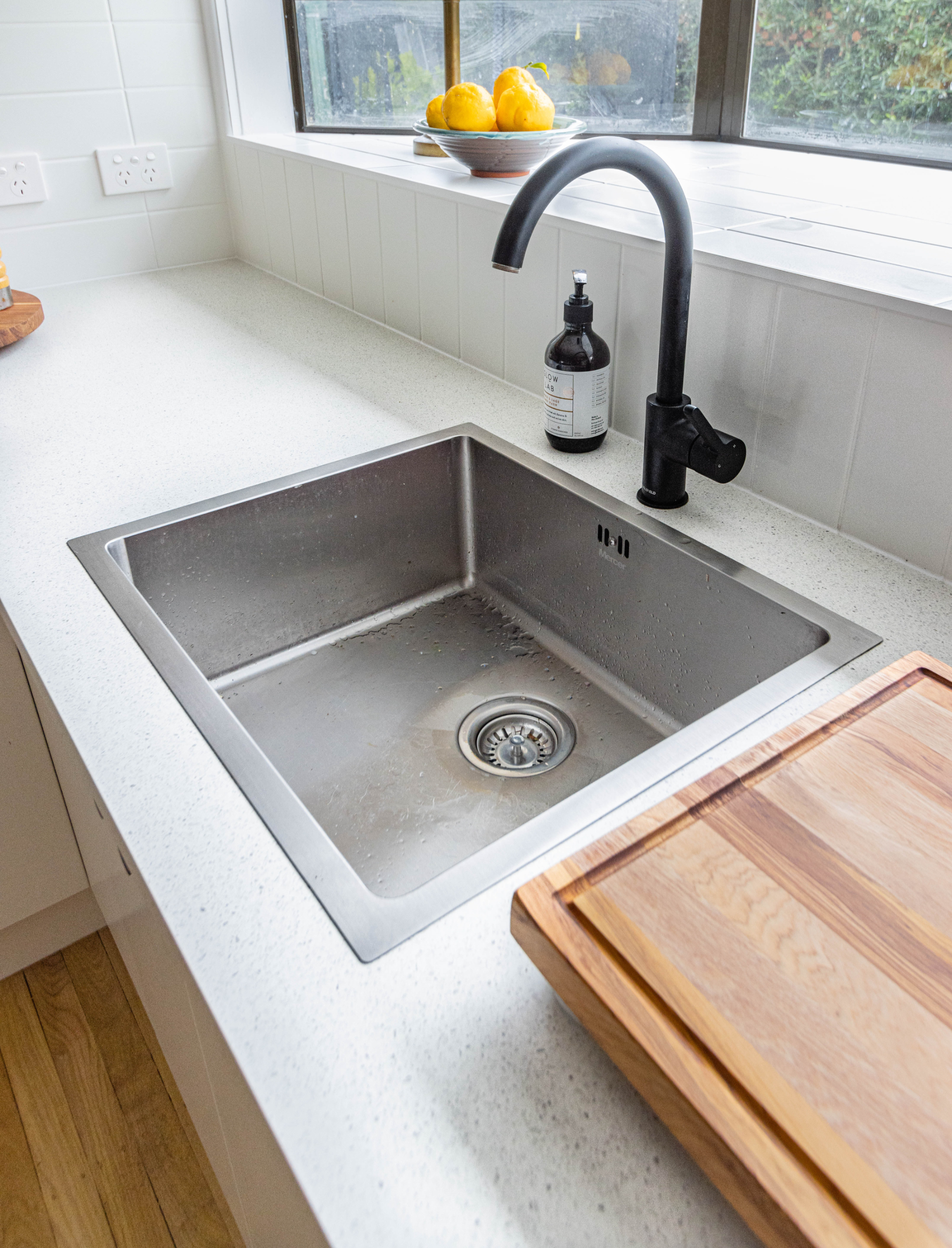
A slow draining sink can be fixed (in most instances) with a plunger, pouring baking soda and vinegar down the drain or using a chemical clog remover. Older houses may experience this more than modern ones, but every property is susceptible to this. Regular inspection should prevent your drains from clogging and slow water draining.
If your bathroom tap continues, consider monitoring what you are pouring down it, as human hair and other waste can easily cause a blockage. Your kitchen sink should be treated the same way, as potato peels, cheese and plastic are common causes of blocked and smelly drains.
Clogged bath or shower drain
As with slow or clogged pipes and drains in your bathroom, this is caused by hair and soap building up over time. How much water is draining shows how much dirt and debris are clogged in the drain. If your shower or bathroom sink is not draining as intended, this is a symptom of mineral deposits and hair blocking the pipe.
Our advice is to use a plunger or plumber's snake or attempt to unclog the drain with vinegar or baking soda, both of which are known to remove clogs. You can increase the suction power by using petroleum jelly on the end of the suction pad.
To maintain healthy drains and pipes and prevent problems in the future, most people will regularly check their drains even when they know there to be no issue.
Clogged toilet
Clogged toilets are not ideal for anyone, typically caused by toilet paper and human waste. Thankfully, you don't need to contact a professional plumber to fix this issue in many instances, and you can fix it when you have the proper tools.
A plunger can help dislodge the blockage and get your toilet running again. A drain auger or sewer snake can also be used to fix your clogged toilet issues. With all toilet issues, check each component separately.
Start with the fill tube, overflow tube and the chain attached to the flapper valve to ensure it's not tangled and is at the right length.
Running toilet
On the other side of the spectrum, a running toilet is caused by a faulty flapper valve, more than likely. This is responsible for transporting water from the water tank to the toilet bowl.
Once again, your water bills can increase from a running toilet as it can produce up to 200 gallons of wasted water each day it's left untreated. In some cases, build-ups of sediment can cause problems with your water tank and the toilet filling up.
In those instances, try putting food colouring in the upper tank and watching to see if it moves to the bowl without flushing. The less water you can use generally, the more conscientious you are of the environment.
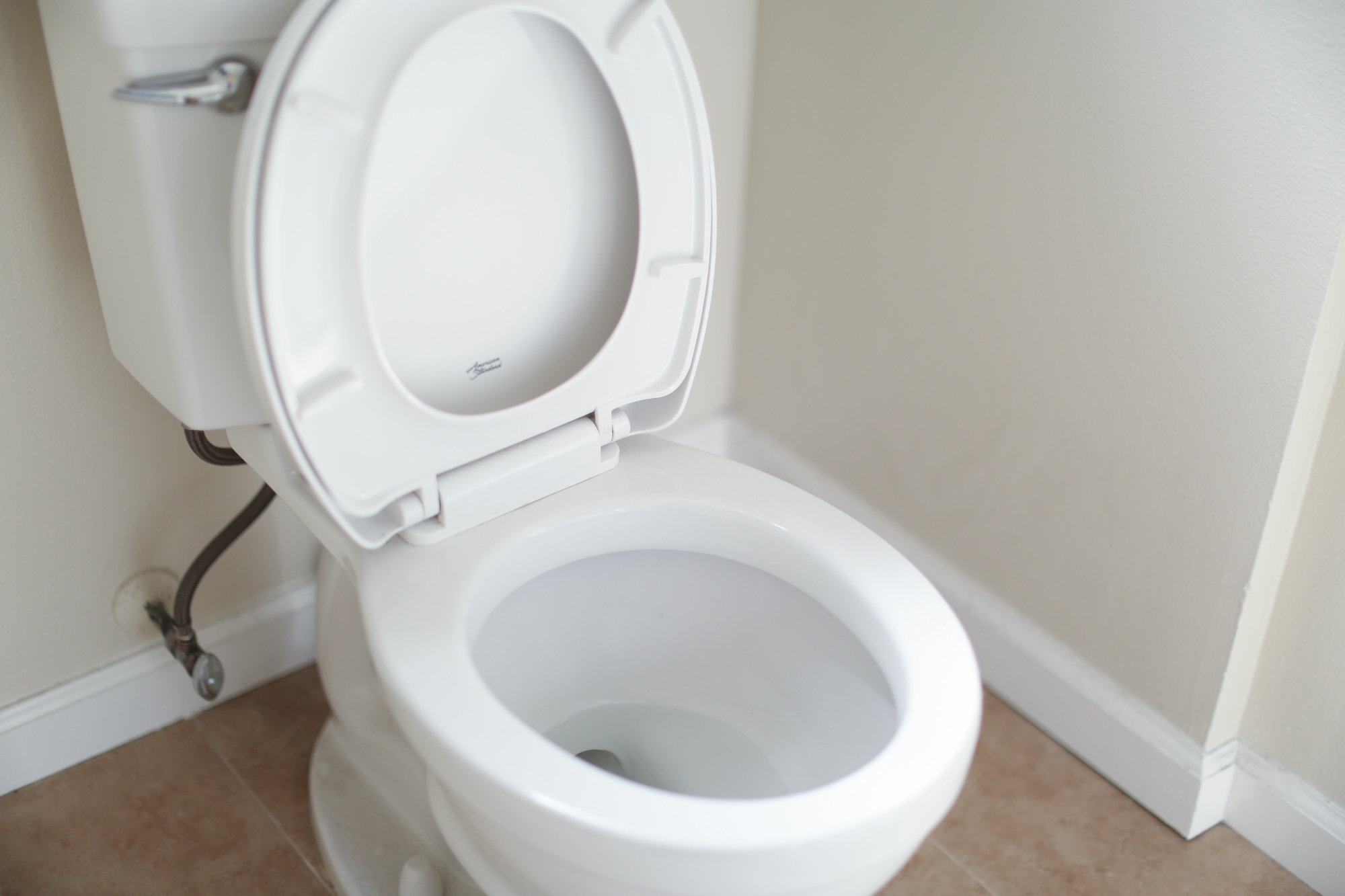
Faulty water heater
You may not notice a faulty water heater until you are showering or running the tap and the water runs cold. However, this is a common plumbing issue and can have some more straightforward fixes.
Start by checking your pilot light as this may have gone out, meaning you have to relight it. If you are not comfortable doing this, contact a professional. Sediment can also build up in your tank and cause your water heater not to work.
Occasionally, your water heater may not be responding to your thermostat settings. This can be due to a recent power cut, or the batteries need replacing. As with all plumbing repairs, you are best contacting a professional to maintain and repair any damages.
Low water pressure
Low pressure from your taps and showers results from leaking pipes that have become worn down or cracked over time, especially in older houses. If your water pressure appears very low, with the water trickling out from the taps, you may have cracked pipes or mineral deposits building up on the aerators.
In the case of sediment and minerals, you can soak your aerator and shower head in vinegar overnight or simply replace them by buying a new part.
When it comes to cleaning your shower head with vinegar, be sure to dismantle the unit carefully and remove all dirt and debris. You can use a toothbrush soaked in vinegar to scrub all minerals away and a toothpick or safety pin to poke away deeper deposits.

Leaky pipes
Leaking pipes are considered plumbing emergencies in many cases, not just being a nuisance but posing a risk to your furniture and home. Water damage can quickly set into your floorboards and surrounding areas, attracting pests such as cockroaches and mice.
Leaks are more likely to occur at the pipe joints or other connection points. Check for silent leaks throughout your system as you will not always hear dripping. Tape, fillers and compounds may temporarily fix your leak, but the correct tools from professional help will ensure the problem stops.
As your pipes freeze in the winter, it's easy for them to expand and break, especially with old fixtures. Before the damage occurs, check to see the pipe bellies and if you can hear any dripping or see wet patches. Mould and mildew can begin to form when you do not care for the issue immediately.
Sewer system backup
Your sewer line is not something you want to think about, and when you begin to smell foul odours of human waste, it can quickly become unhygienic and cause more problems. If you are experiencing sewer system backup, this can be incredibly smelly and expensive to fix.
Identify where the problem is (sometimes you will have to pay a plumber just for this) because if the sewer line issues are coming from outside your house on the road, your water company is responsible for fixing this.
Old sewer lines may experience more problems than modern ones, but the fault can vary. Due to old lines being built from clay or cast iron, they were more likely to break.
Thankfully, many modern lines are built from stronger plastic. It's likely that either tree roots are causing a blockage, or too many items have been flushed that shouldn't have been. Baby nappies, napkins and facial tissues should not be flushed down the toilet, along with grease and oil.
Older fixtures, especially in older properties, are likely to cause problems for you. If you have moved into a house built before the 1980s, the original fixtures in place can break down before you realise it, so consider investing in new ones.
This can be an expensive endeavour, but you will save yourself time and money in the long run by looking out for yourself.
Do You Need Help with Common Plumbing Issues?
When you notice inflated utility bills or your drain clogs regularly, you will definitely require help from professional plumbers. When working with exposed pipes and drains, you can sometimes fix most clogs with a plunger using air pressure.
If you have multiple drains affected by clogs and drainage problems, this is a sign of a bigger problem in your plumbing system. Caustic drain cleaners can cause damage to a pipe when used regularly, so be hesitant to apply certain products too often.
Slow drains and toilets can and should be tackled by yourself first, using a toilet repair kit or plunger, but only complete the work you are comfortable with.
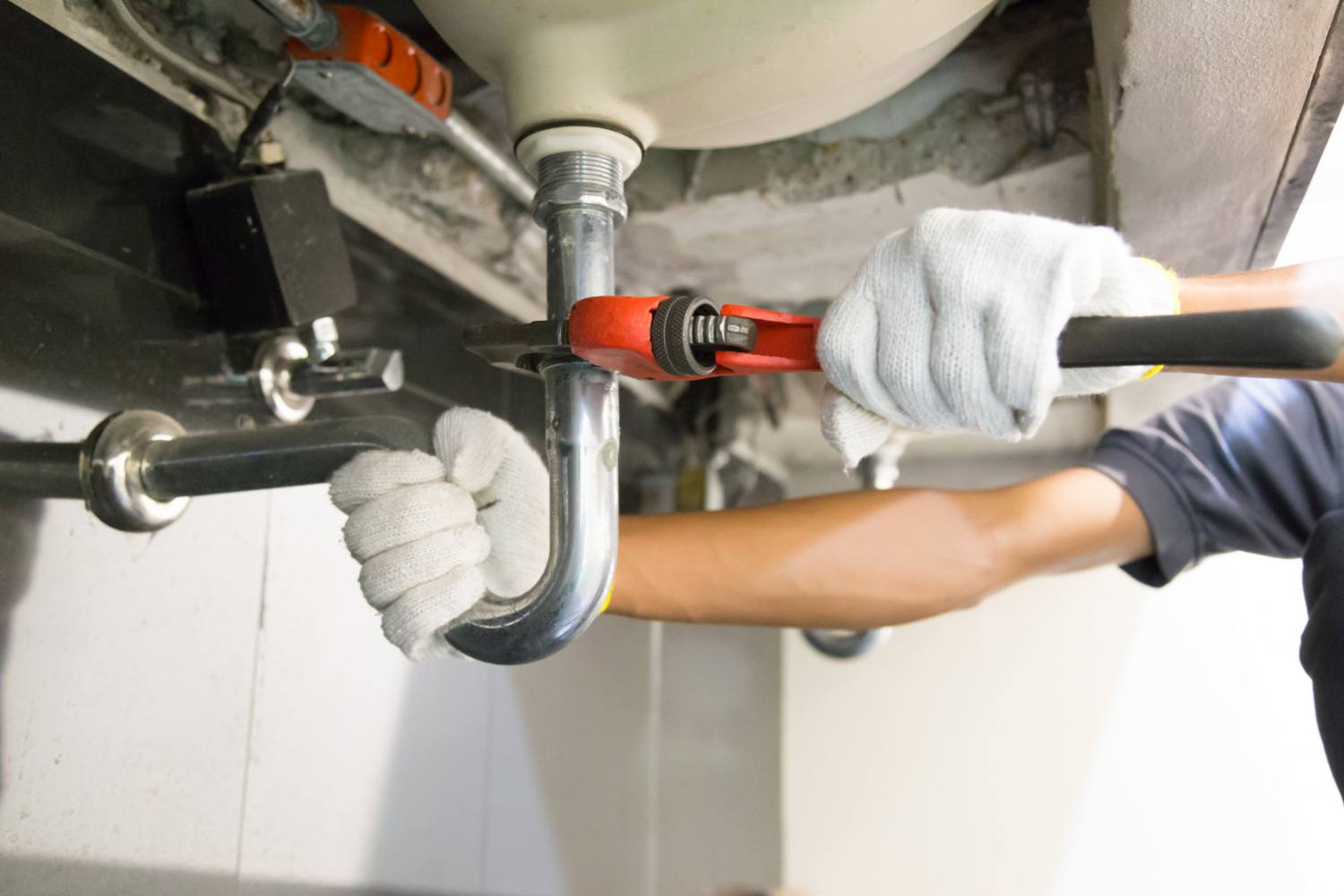
When it comes to water heaters, ensure you switch off the power beforehand. With electric water heaters, make sure the surrounding area and your hands are dry before touching, or wear gloves for additional protection.
There will be valves you can switch off, making the unit safe to touch and interact with. If you cannot work the valves or they are broken, turn off the water mains to your house. Contact a plumber as soon as possible for any more severe water heater problems.
There are many elements at work in your plumbing system, and you cannot manage all of them yourself. This means you will require professional help at some point in time. For example, many homes built between the 1970s and 1990s used a lot of polybutylene pipes due to their cheaper rates. Unfortunately, these pipes can wear down much easier over time.
What to Do in a Plumbing Emergency
When you are without hot water or your sink is full of standing water, the only solution seems to be panicking as if you have done something wrong. You may have taken your running water and heating for granted, so when you find frozen pipes in the winter or the main sewer line seems to be backing up, you assume it's the end of the world. What we're saying is...don't panic at this stage.
While your plumbing system can experience bigger problems when such problems are left unfixed, costing you more time and money, you should not panic, and the first thing to focus on is identifying the location of the problem. If you have experienced heavy rain as of late, your drain guards and external pipes could be blocked by leaves and foliage, meaning proper water flow isn't being met.
Thankfully, this is an easy fix. Using towels, paper sheets and other absorbent materials, attempt to contain the water flow and consider turning off all water lines to your house if the problem persists. Due to the sophistication of your average home plumbing system, there are many places the problem could be originating from. 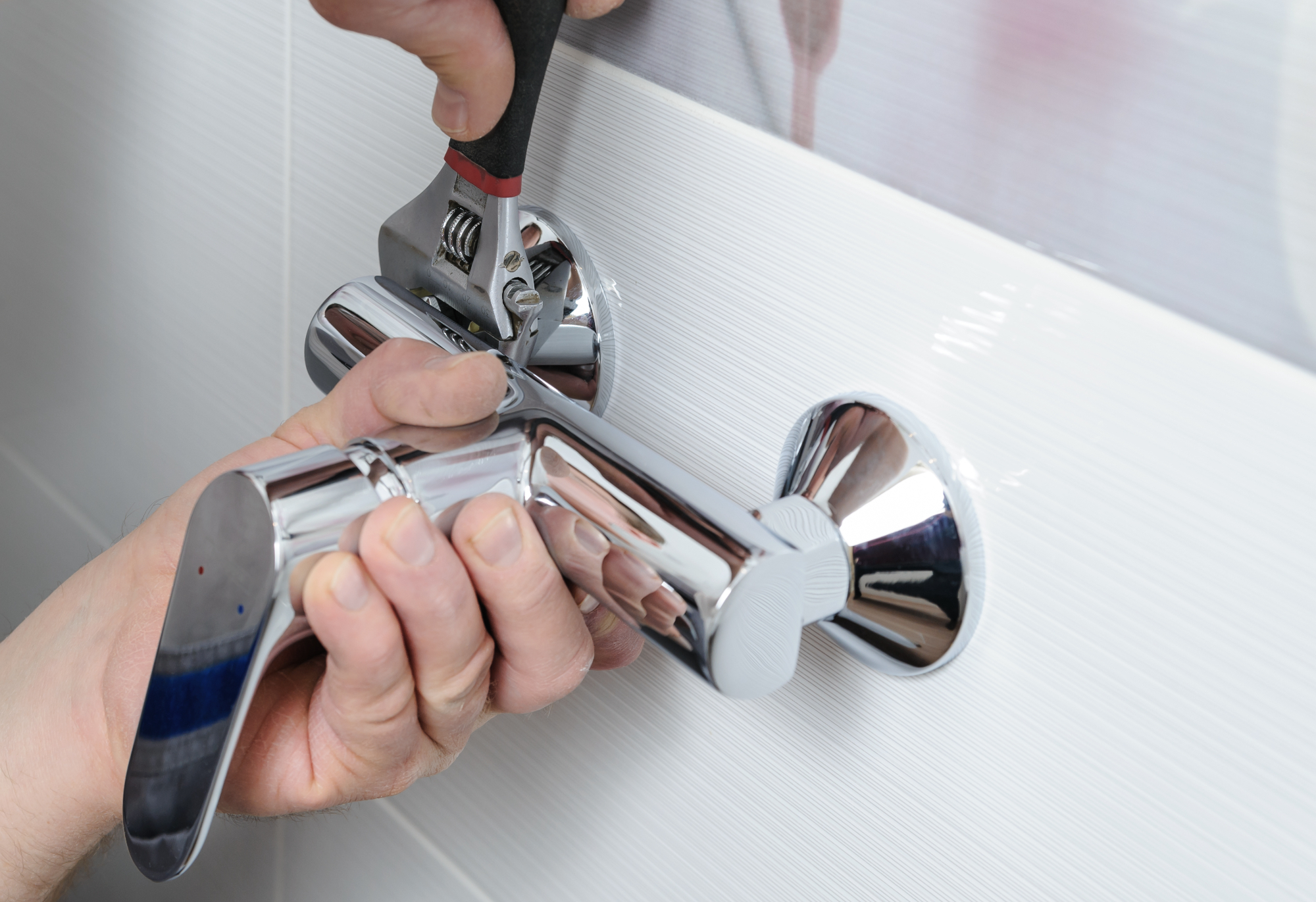
The earth underneath your home is rarely completely static, meaning the pipes can buckle and bow over time - causing water problems for you and your family. Many homes were built with galvanised pipes, which are made from iron and coated with zinc. These can experience corrosion over time break, causing a plumbing emergency.
A plumbing emergency is defined as a time when you are left without hot water, or the water remains at the same temperature without warming. This is a cause for concern and signifies a build-up of loose deposits or minerals on your heating elements in the water heater.
Many people install mesh wire over their external gutters and drains to ensure that leaves, twigs and other debris cannot enter, which is something you should consider doing. Major issues can arise when you don't take small steps to protect your plumbing systems.
Contact our team today for more support on keeping your home plumbing secure and running efficiently. No matter the job, we're here for you.
